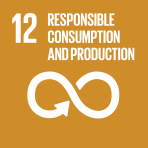 Responsible Consumption and Production
Responsible Consumption and Production
Forests and wood – the great green engine
In early human history, wood harvested from forests was a vital source of energy, tools, utensils, furniture, shelter and construction materials.
How natural are the UNECE forests?
Depending on its origin and development, FAO distinguishes two main types of forest: naturally regenerating forests, including primary forests, and planted forests, including plantations.
How much of the world is forested?
Forests are dynamic ecosystems, shaped by natural and human influences which constantly change.
2025 Forest Profile for Europe, North America, Caucasus and Central Asia
This comprehensive study explores the multifaceted role of forests within the environment, economy, and society, with a specific focus on the ECE region. It begins by defining and presenting the global distribution of forests, followed by a detailed examination of their diverse biomes and typical forest types within the ECE region. The document tracks forest development, including area and growing stock dynamics, and highlights key tree species. It then delves into critical aspects such as the health and vitality of forests, their management practices (including ownership and functions), and their vital protective functions for both humans and the planet. Further sections are dedicated to the immense biodiversity found in ECE forests, their crucial role as carbon reservoirs in climate regulation, and their significant economic contributions through timber and non-wood forest products. Finally, the overview addresses the profound social dimensions of forests, recognizing their value for recreation and cultural heritage.
What are the different trees in the UNECE forests?
Trees are vital parts of our planet’s ecosystems.
Forests and carbon – a global reservoir
Forests account for 92% of all terrestrial biomass and are a significant natural storage place for carbon.
Forests - social and economic benefits
Forests are more than the sum of their wood, non-wood products and environmental services.
Abstract
This publication provides an overview of the state of forests in Europe, North America, Caucasus and Central Asia, showing their importance for sustainable global development.
Introduction
Despite their continuing reduction worldwide, forests are still one of the most common types of land cover, covering around a third of the Earth’s land surface.
How diverse are the UNECE forests?
The UNECE region has a variety of forest types across three biomes: boreal (taiga), temperate and subtropical.
Forests - protecting people and the planet
One of the most vital forest roles is protection: guarding the environment, human wellbeing and infrastructure from natural hazards.
Forest functions and services
Forest services are the benefits, such as cleaner air, fresh water, timber and recreation, derived from different functions of the forests.
Acknowledgements
This publication was prepared under the guidance of the United Nations Economic Commission for Europe (UNECE) Forest and Bioeconomy Section, as part of the project “Enhancing data collection and analysis for the improved dissemination of information on forests in the UNECE region” funded by Canada.
